Better living in small spaces – that’s what we’re all about here on the Box Room blog. So, with the summer heat on high and the urge to escape running riot in offices across the capital, Em Kuntze explores better holidaying in small vans – the humble campervan, to be precise.
Ever since the VW campervan first drove onto the scene in 1949, we’ve been transfixed by its design lines, colour schemes and the promise of the freewheeling, itinerant lifestyle that’s pretty much sold implicitly along with the van itself.
It might be this which, in part, explains the enduring appeal and mystique of the campervan – the Splitty, the hippy wagon or whatever you might call it – while its cousin, the caravan, seems to languish behind in the doldrums, being towed along the road by people driving Rovers.
The campervan conjures up thoughts of lazy beach days, minimal responsibilities, sand between the toes, surfboard under the arm and the freedom to roam. Sure, we could pack up the car and do the same, but somehow the campervan is different.
“There’s just something about them”, says Alex of Just Kampers, a company who supply parts, accessories for the various iterations of vans, bugs and Karmens, each as iconic as the last. “They’re fun to drive,” he continues, “aesthetically pleasing and the appeal of just being able to get away is undeniable”. Part of the appeal has to be the way that driving one of these hunks of metal necessitates re-evaluating your travelling priorities: speed, for example, is never going to be something you get one of these things for, so as you adopt the VW driving posture (kind of sitting upright, leaning over the wheel, with the slightly odd sensation of the pedal being below your feet), you shift down a gear, too.
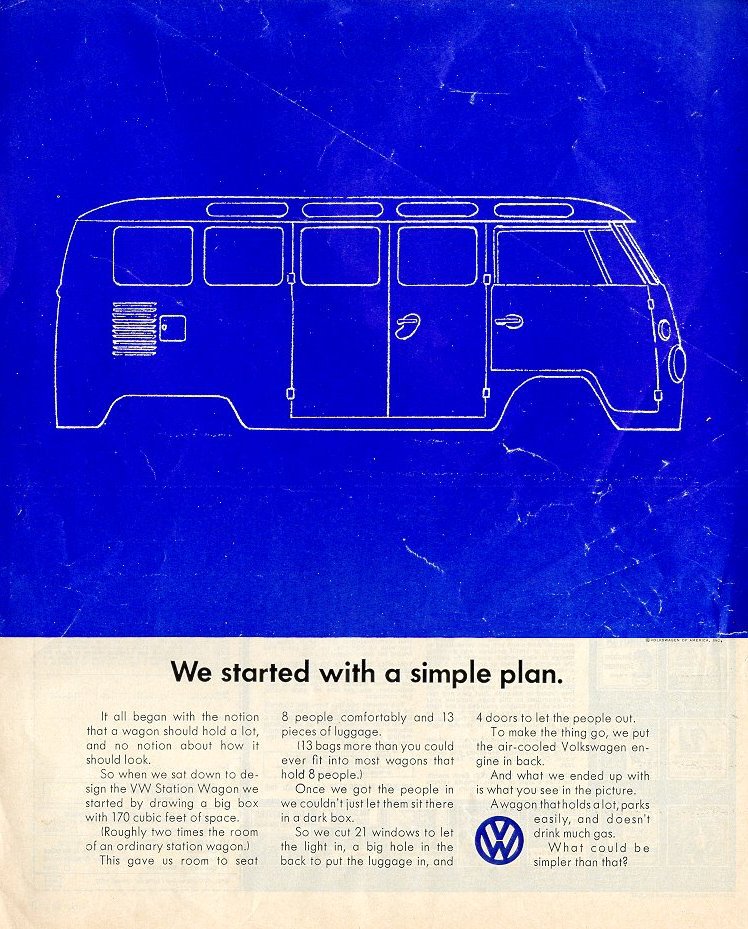
It was a Dutchman who first sketched the design for what would become one of the most recognizable automotive silhouettes of all time. Back in 1947, Ben Pon noticed that the trolleys being used for loading and transporting parts around a factory were in fact built on the chassis of a VW Beetle. He sketched a design for a multipurpose van which was picked up shortly after by the team of engineers at VW. Production started at the modest rate of 10 vans a week the following year and were previewed to the world at the Geneva Motor Show in November 1949. Almost 5 million campers were produced over the next 60 years, which is pretty impressive, given its slightly niche appeal.
The flexibility of the internal space and the seemlingly endless possibilities for configurations led it to be used for such varied purposes as delivery trucks, ambulances, fire trucks and ice cream vans before its appeal as a useful domestic vehicle was recognized.
As with anything that has such an avid cult following, it would be entirely possible to get into every iteration of the camper and do so at length, but there are other people on other pages, like Volkzone, able to that. Instead, here’s a very brief, very crude introduction to the differing types of vans in the VW fold, so you’re at least able to nod in recognition next time you’re at a dinner party and someone mentions their beloved 1975 Bay.

Of course, although the term campervan has become synonymous with VW, there are other offerings as well, many of which don’t have the same price tag of the German original. Whilst a Talbot or an LDV van just doesn’t seem to have the same mystique to it, it’s become an attractive option for people who don’t want to shell out the kind of money a VW demands. Mike Hudson spent five months converting a rusty old van into something to act as transportation and accommodation. Now, several years later, he has thousands of miles under his belt and over 30,000 readers following his adventures, evidence – if you needed it – that the fascination with packing up and shipping out never fades.
That’s nice and everything, but I live in London and don’t have parking…
If you’re in London and fancy a campervan expedition, it is entirely possible to hire a van from within the M25 and then head on out on Route 66… or the M4.
Camperbug is a kind of matchmaking service for those who have vans and who are looking to hire them out to people who don’t but quite fancy getting behind the wheel of an iconic bit of machinery for a weekend (or longer). They’re nationwide, but there are numerous vans available to hire in London itself, and they offer various makes and models of van.
Wicked Campers also have pickup locations in the city as well as throughout Europe and their vans are instantly recognisable with a serious amount of street art emblazoned across them. They’re all more modern campers (though not necessarily VW), and as well as the larger van size, they also offer more compact versions: perfect if it’s just the two of you.
Campervantastic, based in Forest Hill, have the luxury end of the market down pat, with brand-spanking new vans (the T6 for those in the know) available to rent. Availability is looking tight for the summer, but they have said they’re adding to their fleet, so it’s certainly worth taking a peek
Buttercup Bus, as you may guess from the name, are into all things retro, so a good place to look if you’re after a vintage van. They’re based in Croydon, so a little further out, but their stock is so adorable we just had to give them a wee mention.
Whilst our vans don’t have quite the vintage cache of the VW, we think they’re just perfect for transporting your prized possessions to our storage facility. Our Boxman drivers will deliver empty boxes to your home and come back to collect them when you’ve packed them up. Need something again? Just give us a shout and you’ll have sight of our blue vans and your things before you can say “Air-Cooled Wesfalia Bay Pop Top”.



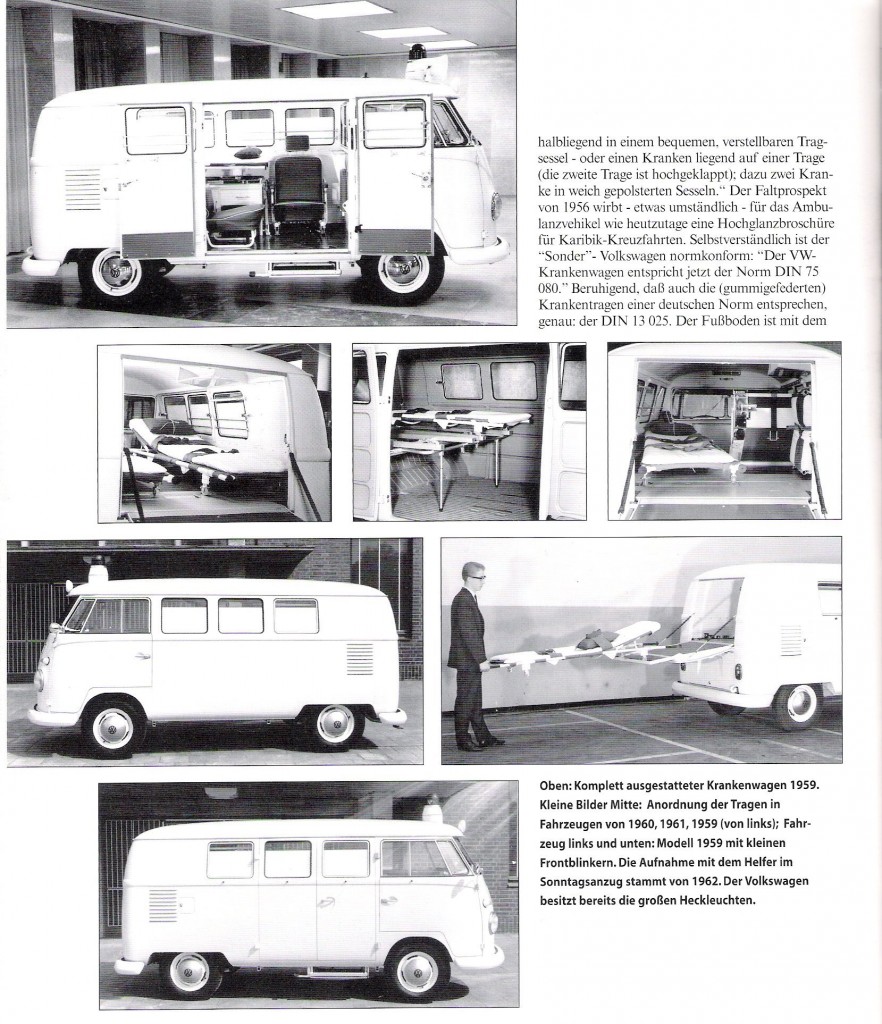
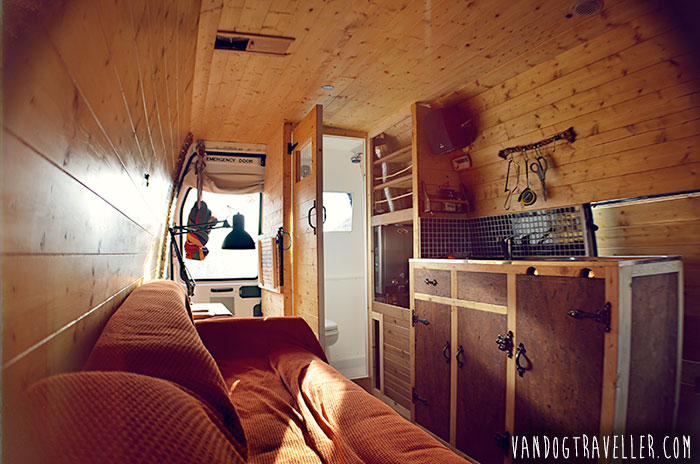


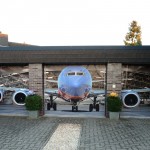


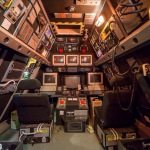

I drive a ’67 split screen VW camper I have owned for nearly 30 years in both the UK and Australia; in fact thiswas one of the last vans restored by Just Kampers before they went into the parts business. The camper (kombi in Oz) offers me 3 things: the ability to store all the camping gear in the vehicle so I can camp at a moment’s notice; the go anywhere flexibility without having to tow a house on wheels behind me; and the sense of being in ‘another space’ - when I am camping I am in the outdoors, away from home and the need to get up and go to work in the morning. As a relatively rare and original Canterbury Pitt it is increasing in value, has all the style of a design icon, and has a wonderfully practical and comfortable interior.
Off to the massive VW show at Valle Beach on Monday - looking forward to being on the road again!
Enjoy yourself, Jim. And thanks for the comment!